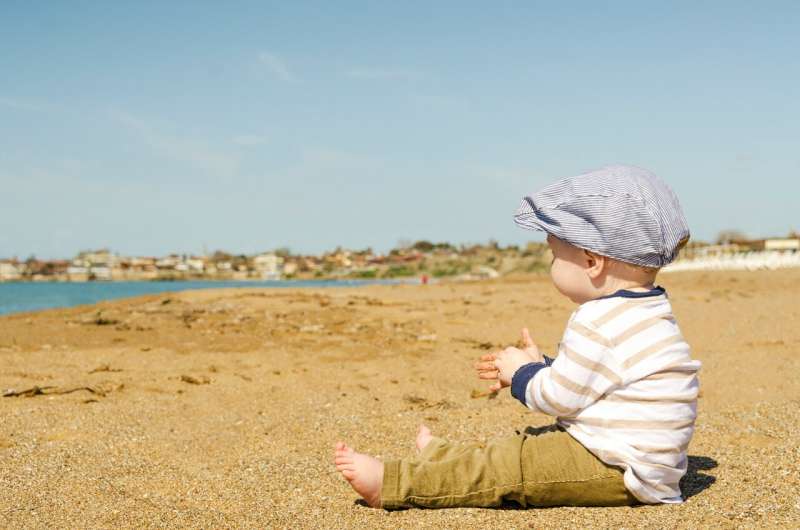This article has been reviewed according to Science X's editorial process and policies. Editors have highlighted the following attributes while ensuring the content's credibility:
fact-checked
trusted source
proofread
Pioneering research sheds light on how babies and young children understand the art of pretense

Babies recognize pretense and around half of children can pretend themselves by 12 months, new research has found. The study, led by the University of Bristol, shows for the first time how children's awareness and grasp of pretense in its various forms develops from birth to three years.
Lead author Prof Elena Hoicka, Professor of Psychology in Education at the University's School of Education, said, "Our findings highlight how pretending is a complex, evolving process which begins very early on in life, helping their cognitive and social skills to advance. Pretense is a key part of children's learning, creativity, making friends, and understanding of other people. This study maps its many different stages and types."
The findings are based on results from a survey of 900 parents of children aged from birth up to three-years-old (47 months) from the UK, US, Australia, and Canada. The earliest reported age when children understand pretending was four months, and by the age of 13 months, around half were reported to recognize pretense by others. Around half of 12-month-olds were reported to be pretending regularly themselves.
Researchers identified 18 different types of pretending which emerge and progress in the early years. One-year-olds' pretense was shown to initially involve their bodies, for example, pretending to sleep. They may also gesture objects and actions, such as brushing their teeth with a finger or pretending to use objects for their intended purpose, like drinking out of an empty cup.
Prof Hoicka added, "This then moves on to pretending one object is another, for instance pretending a banana is a phone. This type of pretending really opens up their sense of creative play as they can now imagine any object they want to play with."
The pretense of two-year-olds was reported to show more abstract thought, with children pretending to do things they wouldn't normally have everyday experience with, like pretending to fly a rocket ship. By this age, children use their whole bodies to pretend to be others, including being objects such as trees, animals, or other people.
"This can include people they know and fantasy characters, such as Spider-Man or Peppa Pig. As their language skills are also developing, this can help them to pretend in new ways, allowing them to create elaborate storylines when doing so," Prof Hoicka added.
Finally, three-year-olds were reported to be highly creative, often inventing wild scenarios, such as impersonating cartoon characters flying through space. Some were also said to be creating and interacting with imaginary friends.
Prof Hoicka said, "While some parents may be over-reporting pretense understanding in the youngest children—at four months—in our sample, the ages at which parents observe these 18 pretense types are largely consistent with previous research findings."
The study is the first of its kind to chart how and when pretense evolves from its inception through three years.
"Previous early pretense studies have been observational or experimental, limiting the number of children involved," Prof Hoicka added. "This new parent-report survey measure has allowed researchers to study a large number of children, which is unheard of using observational or experimental means."
The researchers hope it will help parents and early years teachers understand and identify which types of pretense are appropriate to try with children at certain ages, supporting their learning, creativity, and friendships.
Prof Hoicka said, "With further research, the findings have the potential to be used as a diagnostic tool for developmental differences in early years. This could ultimately help parents, early years educators, and medical professionals better understand how to play with children at different stages of development."
More information: 'The Early Pretending Survey (EPS): A Reliable Parent-Report Measure of Pretence Type Development for 4- to 47-month-olds', Cognitive Development (2024).




















